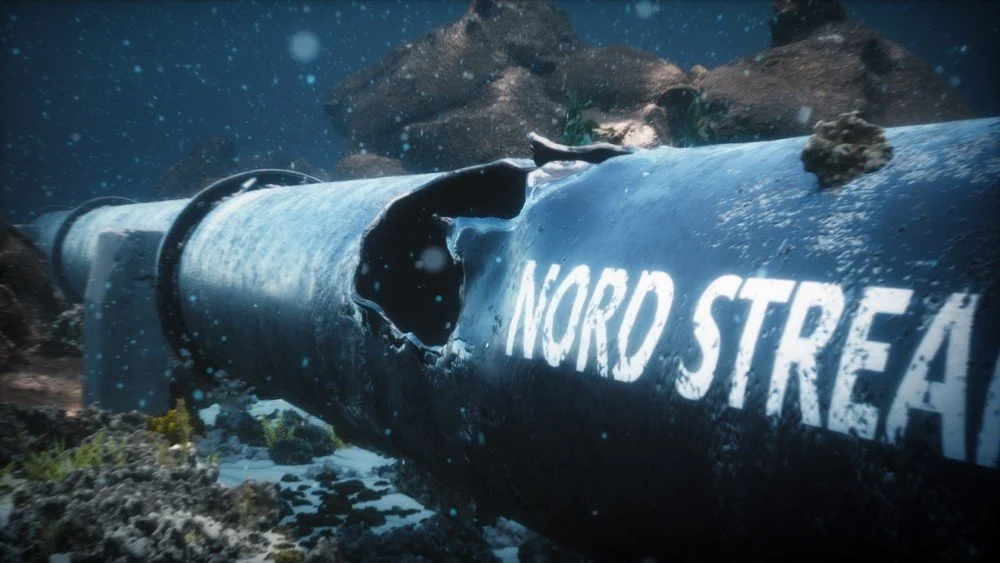India’s Kashmir a Target of Islamic Terrorism
/22 April 2025: Jammu and Kashmir still battered by barbaric attack
On April 22, 2025, one of the deadliest terrorist attacks took place in the pretty Baisaran meadow, near Pahalgam - a rural resort in the Anantnag district of Jammu and Kashmir - a remote area accessible only by foot or on pony backs.
The terrorists opened fire on a group of tourists, mainly Indians, killing 28 and injuring 10, including two foreigners - a Nepali and a United Arab Emirates national.
The Intelligence Services suggest that the attackers infiltrated the Kishtwar region across mountainous terrain to reach Baisaran via Kokernag in southern Kashmir, as the remote location facilitated their movement to the bombing site.
The Claim
The Resistance Front (TRF), a shadow organization of the Pakistan-based banned Lashkar-e-Taiba (LeT) party, claimed responsibility for the bloody attack. The TRF was established in 2019, shortly after the Indian Parliament revoked the special status of Jammu and Kashmir. But the terrorist attacks in Kashmir had not waited for the so-called creation of the TRF...
kashmir map 2001
The Resistance Front (TRF): a proxy of the Lashkar-e-Taiba (LeT)
According to Vaishali Basu Sharma, a geopolitical and macroeconomic analyst, “the creation of the TRF reflects a deliberate strategy by Pakistan - to mask its support for terrorism in Jammu and Kashmir - and to present the TRF as an indigenous entity to distract international attention. By claiming responsibility for the Pahalgam terrorist attack, the TRF underlines its alignment with LeT's objectives, perpetuating violence and instability in the region under the guise of a distinct identity."
The Aftermath of a Long List of Islamist Attacks
The Pahalgam tragedy follows a long list of attacks orchestrated by Lashkar-e-Taiba (LeT), also known as Jama’at-ud-Da’awa. “Based in Muridke near Lahore, Pakistan, and led by Hafiz Muhammad Saeed, LeT’s ideology goes beyond contesting Indian sovereignty over Jammu and Kashmir,” Vaishali Basu Sharma told us - “His agenda, detailed in the brochure - “Why Are We Doing Jihad” - advocates the restoration of Islamic rule in India. The group operates training camps and recruiting centers throughout Pakistan and Pakistan-occupied Kashmir (PoK), including in Muzaffarabad, Lahore, Peshawar, Islamabad, Rawalpindi, Karachi, Multan, Quetta, Gujranwala, Sialkot, and Gilgit. According to reports, LeT has about 2,200 offices across Pakistan.”
History of Islamist massacres in Jammu and Kashmir
Gool Massacre – 14 Aug 1996: 17 Hindu villagers killed inside their homes by Hizbul Mujahideen at Gool, Udhampur
Sangrampora – 21 Mar 1997 : 7 Kashmiri Pandits shot dead in Budgam by Lashkar-e-Taiba (LeT)
Prankote – 17 Apr 1998: 27 Hindus beheaded by Hizbul Mujahideen for refusing to convert.
Nadimarg – 24 Mar 2003: 24 Kashmiri Pandits killed at Nandigram Shopian district by Lashkar-e-Taiba
Wandhama – 25 Jan 1998: 23 Hindus massacred near Ganderbal : LeT & Hizbul Mujahideen
Chapnari – 19 Jun 1998: 26 Hindus killed during wedding celebrations in Doda by LeT & Hizbul Mujahideen.
Chittisinghpura – 20 Mar 2000: 35 Sikhs executed in Anantnag district by Lashkar-e-Taiba
Kishtwar – 20 Jun 2001: More than 12 Hindus killed in Bus attack by Hizbul Mujahideen and LeT
Qasim Nagar – 13 Jul 2002: 29 Hindu laborers killed in a slum near Jammu by Lashkar-e-Taiba.
Doda-Udhampur – 30 Apr 2006: 57 Hindus killed in two coordinated attacks by Lashkar-e-Taiba
Katra Bus Attack – 28 May 2008: More than 6 Hindu pilgrims killed thru magnet bomb under bus by LeT
Amarnath Yatra – 10 Jul 2017: 7 Hindu pilgrims killed in a bus ambush in Anantnag by Lashkar-e-Taiba
Anantnag – 10 Jul 2018: 7 Amarnath Hindu pilgrims again targeted and killed by Lashkar-e-Taiba
Pulwama – 14 Feb 2019: 40 CRPF jawans (mostly Hindus) martyred in suicide bombing by Jaish-e-Mohammed (JeM)
Reasi Bus Attack – 9 June 2024: More than 9 Hindu pilgrims killed, 41 injured by Lashkar-e-Taiba (LeT)
In total, Islamist attacks in Jammu and Kashmir have killed, not counting the wounded, at least 100 in the 1990s, 163 in the 2000s, 54 in the 2010s and here we are at 37 deaths in the last 2 years...
Lashkar-e-Taiba (LeT) has attempted to spread terror, through a series of attacks calculated over the years, both in Kashmir and throughout India.
Indeed, his propaganda arm issued a fatwa against Pope Benedict XVI in September 2006, though Western media were unmoved, with some, such as “Le Monde”, blaming Benedict XVI.
Is this one of the reasons for mainstream media’s discretion over the reality of Pakistan today?
According to Basu Sharma, “since 2019, the TRF has been planning attacks on security forces and civilians, facilitating the transportation of weapons for banned terrorist groups, recruiting and infiltrating militants across borders, and smuggling weapons and drugs.” These are just classic activities of jihadist international groups around the world...
The aftermath of the 22 April 2025 attack
According to Vaishali Basu Sharma, “Saifullah Sajid Jutt, also known as Saifullah Kasuri, a prominent commander of the Lashkar-e-Taiba (LeT), is believed to have masterminded the bloody attack on Pahalgam. Jutt, from Pakistan’s Punjab, is, according to India’s National Investigation Agency, a hardened terrorist operating out of a base in Lashkar-e-Taiba in Islamabad. The TRF’s actions, closely aligned with LeT’s objectives, underscore its role as a dangerous proxy in the ongoing conflict in the region.
The goal of ISI (Pakistan Service) in launching the TRF is twofold: to divert international attention, especially from the Financial Action Task Force (FATF) which monitors terrorist financing, and to support its jihadi terrorist operations in a deceptive guise. By adopting neutral-sounding names like the Resistance Front or the Pir Panjal Forum for Peace in the United Kingdom, the ISI avoids open-ended religious overtones, reinforcing the illusion of a local movement.”
And Vaishali Basu Sharma adds: "The emergence and operations of the TRF are emblematic of Pakistan's long-standing strategy to divert attention from its internal challenges by exporting terror under the guise of indigenous movements. This calculated approach allows Pakistan to maintain plausible deniability while pursuing its disruptive agenda in Jammu and Kashmir.”
Add to that the increasingly destabilizing role of Pakistan’s military and the incendiary pronouncements of its chief general, Asim Munir, and the sequence of events and rhetorical gradation forges a comprehensive model of destabilization designed to perpetuate the conflict between India and Pakistan and thereby distract attention from Pakistan’s own governance and social issues. This is a well-known method that we can observe even in Europe...
India’s Reactions
With the support of the United States, the Indian government decided this time to react, gradually but resolutely, with a series of immediate measures on April 23:
closure of the main border crossing with Pakistan,
suspension of the 1960 Treaty on Indus Waters,
suspension of the South Asian Association for Regional Cooperation (SVES) visa waiver program for Pakistani nationals,
India grants military advisers from all Pakistani military corps in New Delhi one week to leave its territory,
and India has declared that it will cancel the missions and repatriate its defense, naval, and air force advisers in Islamabad.
In response to India’s decisions, following a meeting of Pakistan’s National Security Committee, Islamabad on April 24 closed its airspace to all Indian flights, suspended all trade with New Delhi - including transit through third countries - and revoked all visas issued to Indian citizens.
Moreover, Prime Minister Shehbaz Sharif has warned that “any attempt to block or divert water intended for Pakistan (under the understanding of the Indus) will be considered an act of war.”
In this tense diplomatic environment, even the smallest incident will be exploited and highlighted by uninformed media.
For example, the reported incident between the Pakistani and Indian armies on the night of Thursday 24-Friday 25 April, with gunfire across the border in the Leepa Valley, is a slightly different story. True, Indian troops fired on terrorists trying to infiltrate Indian Kashmir, but there was no exchange of fire with Pakistani troops.
Ever since the Sarajevo bombing on 28 June 1914, it has been well known that an incident, such as a border incident, can easily escalate if other interests do the right thing to...
So we must remain vigilant and beware of a country that has been trying for so many years to destroy its neighbor...
Alain Establier
*On the Lashkar-e-Taiba* (LeT) you can read our other publications:
**Pandit: Hindu literate from the Brahmin caste.















